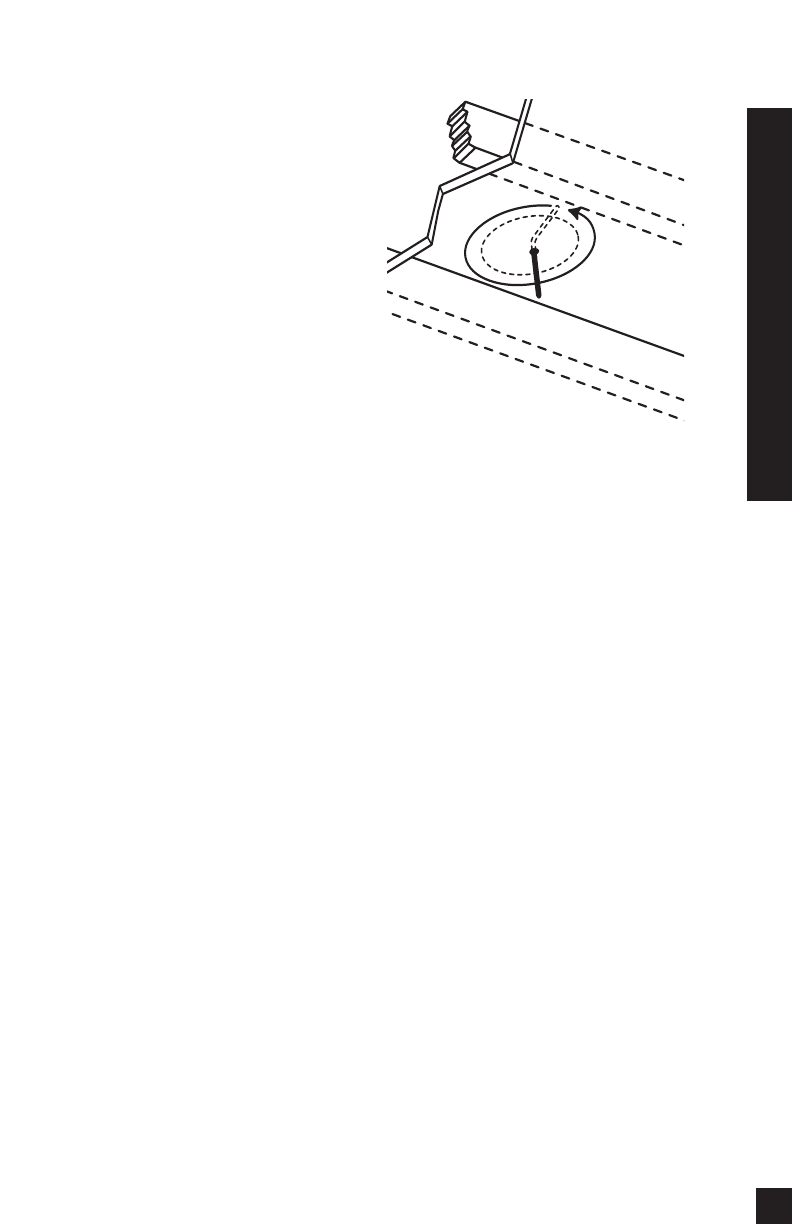
Installation in
Existing Construction
IMPORTANT: Before you cut into any
wall, review the sections on running
wire and loudspeaker placement.
1. When determining the location of the
loudspeaker cutout keep in mind that
the mounting dogs will extend 3/4"
beyond the cutout. make sure that you
do not place the edge of the cutout
directly next to a ceiling joist. Locate
the joists using a stud sensor or hand-
knocking.
2. Once you have determined a possible
position for the cutout, drill a 1/8” pilot
hole just barely through the ceiling
(1/2” to 5/8” deep in most homes)
about an inch below the center of your
proposed speaker location. BE VERY
CAREFUL NOT TO DRILL THROUGH
EXISTING WIRES, PIPES, OR STRUC-
TURE. IF YOU FEEL ANY EXTRA RESIS-
TANCE AS YOU ARE DRILLING, STOP.
3. Cut a foot-long piece of coat hanger.
Bend the wire (creating a right angle)
leaving 5-3/4" this allows for the extra
width of the mounting dogs). Poke the
“L-shaped” wire into the pilot hole and
turn it in a complete circle and move it
into the ceiling cavity to make sure you
have approximately 6" of depth. If the
wires movement is obstructed by any-
thing, fill the hole(s) with spackle and
try another location.
(See Figure 14)
4. If the coat hanger moves freely in a
complete circle, hold the supplied
template up to the ceiling surface.
Outline the circular cutout on the
ceiling surface with a pencil. Drill
starting point with a 1/4" bit.
5.If you are cutting drywall use a
sheetrock or keyhole saw. Cut the hole
with the saw at a 45° angle. That way,
the drywall section can be replaced
cleanly if there is an unseen obstruction
behind the wall. BE VERY CAREFUL
NOT TO SAW THROUGH EXISTING
WIRES, PIPES, OR STRUCTURE. IF
YOU FEEL EXTRA RESISTANCE AS
YOU ARE CUTTING, STOP.
6. If you are cutting into a plaster ceiling,
use masking tape to outline your
penciled circle and use a razor to score
the plaster down to the lath beneath.
Then use a chisel to remove all of the
plaster within the taped outline. To
actually cut the lathe, two methods are
used professionally; sawing with a
metal cutting blade on a sabre saw is
the quickest and the
riskiest. Sawing a
lathe with a sabre saw can easily
vibrate plaster off the ceiling in a com-
pletely distant location creating more
patchwork. If you have the patience,
use a pair of tin snips to slowly nip
away at the lath instead. There is little
risk with this method, it is just time con
-
suming.
14
Installation in Existing Construction
Figure 14


















